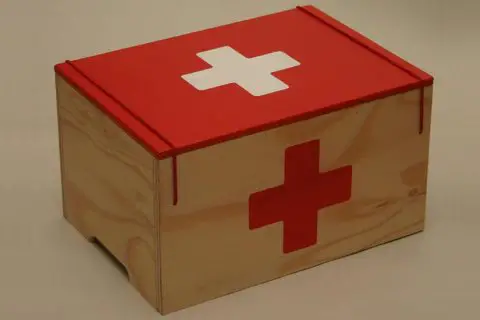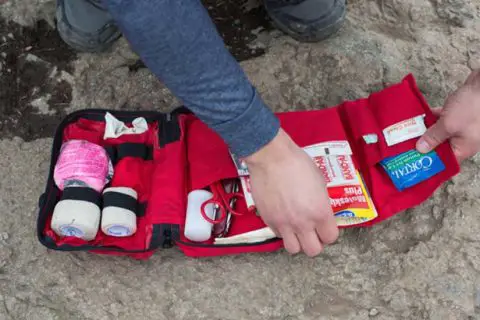One of the perks to going to the outdoor is the excitement that comes with being out of the city to relish in the beauty of the wild nature and also enjoy some quiet time. However, dashing into the wild to enjoy activities such as hiking or camping also means you are getting far away from hospitals, emergency medics, and care clinics. Therefore, you need a good knowledge of first aid administering when in the wild in case things go bad. You can as well consider this as an avenue to learn something new and become self-sufficient.
Many of the incidents that cook up during hiking and camping are usually minor, hence, can be quickly treated. When hiking or camping and there is need for first aid, it is usually to keep a condition from getting worse so it wouldn’t affect your adventure. Therefore, it is vital to be well prepared in case of any unforeseen situations.
From getting to know how to put tape on a sprained ankle to keeping your bruises cleaned, this guide teaches you the essentials or rules of first aid in the wild and how to keep injuries at bay.
1. Seek for help
Depending on how critical the situation is, don’t be afraid to shout out for someone to help you just as soon as you begin administering the first aid. Professional medical help can make a lot of difference especially if the condition is critical and require urgent attention.
2. Keep calm and composed
The key to successfully administering first aid in the best way is to stay calm and not fret. Truth is anxiety will easily cloud your cognitive vision and affect your sense of judgement. Whether you are administering it to yourself or a friend on the hike, anxiety can easily put both of you in even more danger. Start by taking a couple of deep breaths and gauge the current situation – determine the nature of the injury and the kind of help needed. Reach for the first aid box to get what’s needed and can also look around to see anything that can be helpful
3. Identify and avoid risks
Because of many things that lie in the wild, it is easy to get injured while camping or hiking. Now, before you tend to someone injured, you have got to ensure you are also safe first. Should you be injured too, it is important to first of all seek safety by calling for someone to help you and your partner. If you are in a perfect condition, take a quick check to know whether the victim is in the best position to be administered to with first aid.
4. Hospital or not?
If the victim is able to talk, that’s great. If it is stitching that is needed, you need not reach out for an ambulance but prepare to go to the emergency room. If the victim is unconscious, then it is imperative that you make the call to 911. Some of the things you have got to check out are whether he or she is breathing, if the passage is clear, blood circulation and pulse. Most importantly, you have got to decide whether to move the victim or not. In a lot of cases, the decision is usually yours to make and may not be helped. However, you should always be abreast of the fact that moving an injured person who is not in a critical life or death situation may lead to more harm than good.
5. Check if the person is choking
If the injured person seems to be unable to breathe or is choking, an urgent attention is required. If you are trained in CPR (cardiopulmonary resuscitation), you should start it immediately. However, if you have no knowledge of CPR, do not attempt it because you may accidentally break the ribs of the injured person or cause a lung rupture. In that case you can use the mouth to mouth method of resuscitation for choking. Also, you should check the victim’s pulse and loosen his or her clothe to improve the ease of breathing.
6. Attend to any bleeding spot
If you notice any bleeding on the person’s body, apply an even and direct pressure on the spot to cut down the blood flow. You can easily achieve this by placing a clean cloth or sterile bandage on the wound and press the bandage evenly and firmly with your palm to control the blood loss.
7. Avoid or treat any possibility of shock
If you notice the injured person is experiencing breathing difficulty, chilled, clammy, nauseous, or pale, there is a tendency the person is in shock and might lose consciousness pretty quickly. Another symptom that can show the possibility of shock is vomiting, thus, it is essential to ensure the airways are kept clear and unobstructed. If the victim has not sustained any neck or back injury, slowly roll him or her to the side so as to ensure the airways are kept open. This is also to ensure that vomit is well prevented from building up in the back of the victim’s throat which can lead to choking. Should you notice any sign of shivering or shock, get the victim wrapped in a blanket and be sure to follow the universal guidelines to avoid the transfer of any possible infection in any case you come in contact with the victim’s body fluids.
Conclusion
Going for camping, hiking, backpacking or anything in the outdoor can bring a lot of excitement and relief from the busy lifestyle of the city. It gets even more interesting when you are out there with your partner or your family. While the energy levels can easily get high, so is the possibility of injuries in the wild somewhat high. Not a means to getting scared but when out there camping or hiking, the least you should do is to prepare for any eventuality whether in your case or people around you. So, a first aid is a must-go with. But more importantly is knowing how and what to do in such situations of injury or emergency and this guide will help you on the way to go.
You may also like:



